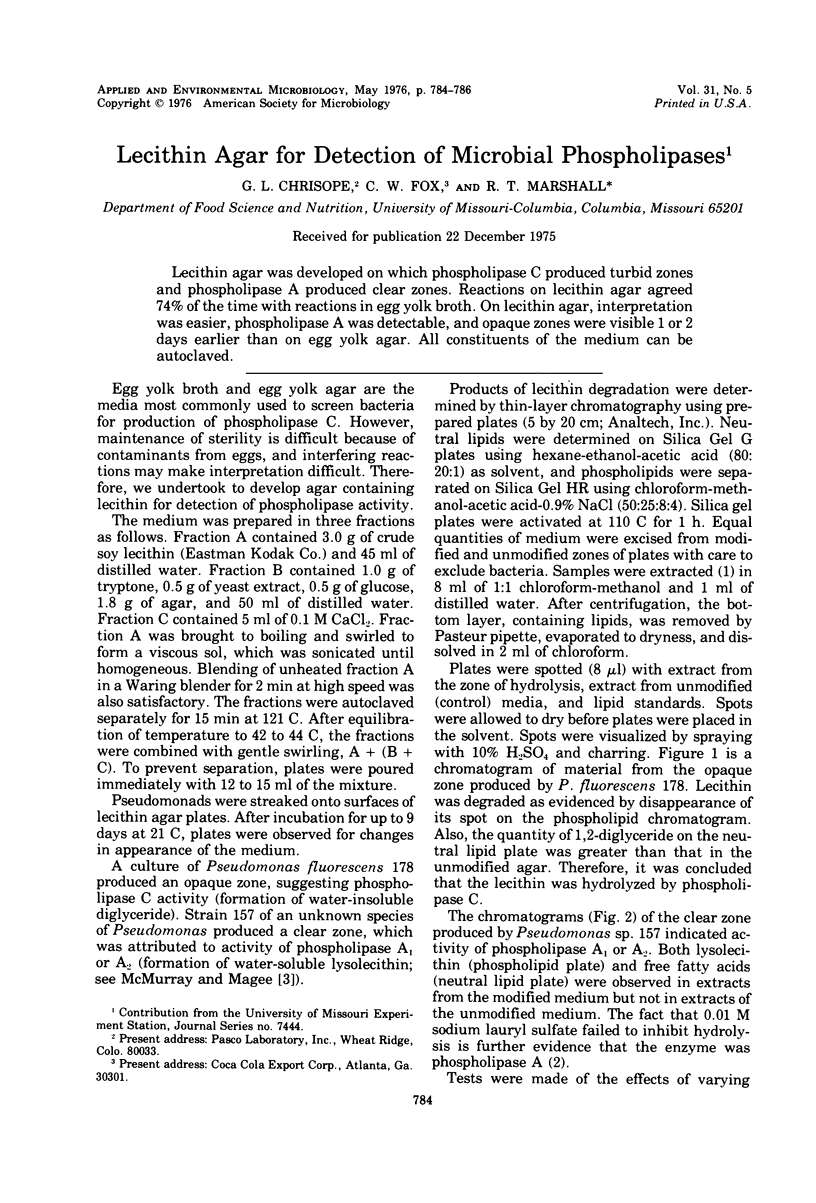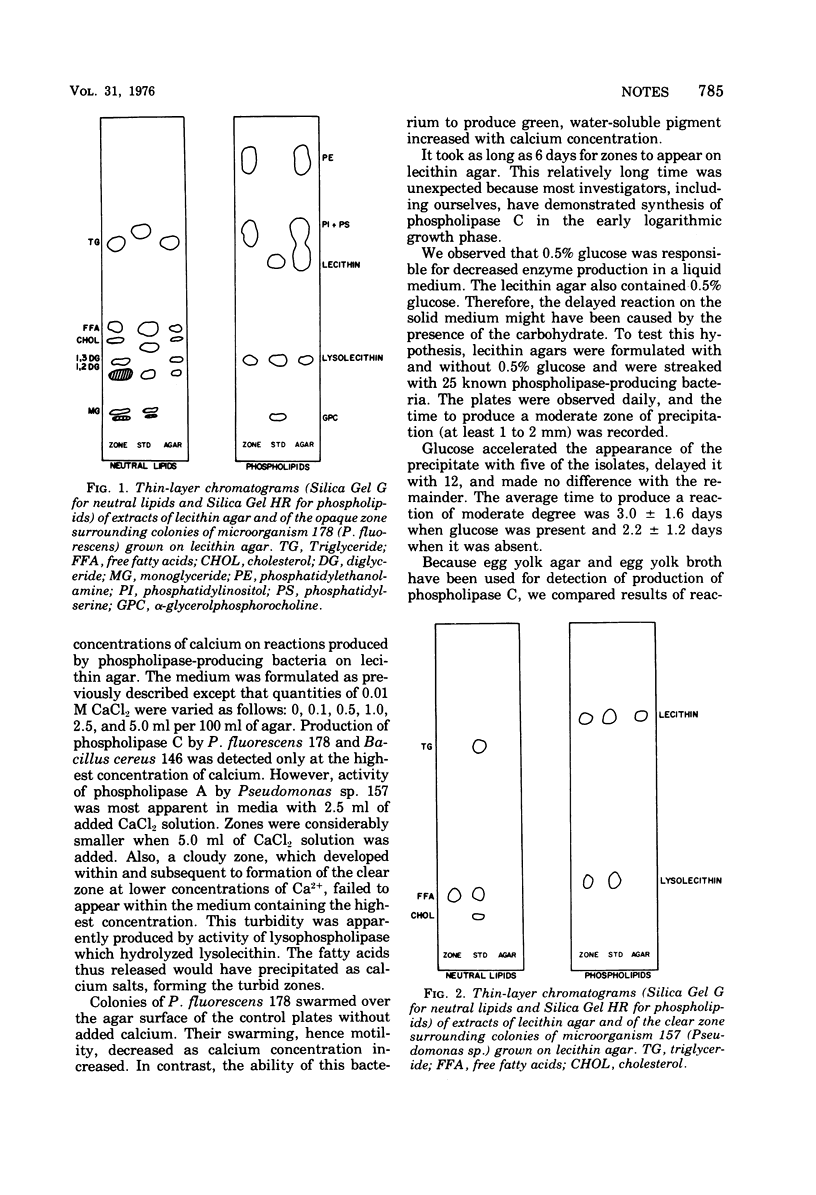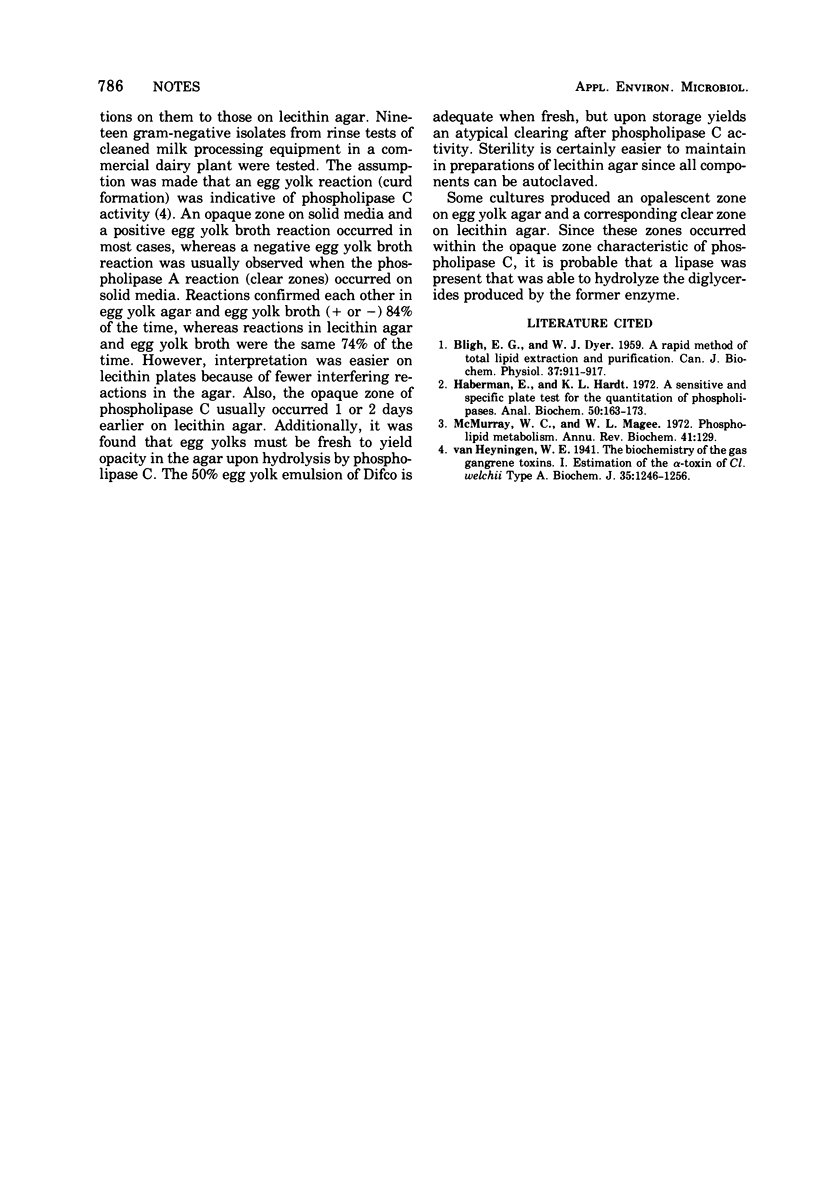Abstract
Lecithin agar was developed on which phospholipase C produced turbid zones and phospholipase A produced clear zones. Reactions on lecithin agar agreed 74% of the time with reactions in egg yolk broth. On lecithin agar, interpretation was easier, phospholipase A was detectable, and opaque zones were visible 1 or 2 days earlier than on egg yolk agar. All constituents of the medium can be autoclaved.
Full text
PDF


Selected References
These references are in PubMed. This may not be the complete list of references from this article.
- BLIGH E. G., DYER W. J. A rapid method of total lipid extraction and purification. Can J Biochem Physiol. 1959 Aug;37(8):911–917. doi: 10.1139/o59-099. [DOI] [PubMed] [Google Scholar]
- Habermann E., Hardt K. L. A sensitive and specific plate test for the quantitation of phospholipases. Anal Biochem. 1972 Nov;50(1):163–173. doi: 10.1016/0003-2697(72)90495-2. [DOI] [PubMed] [Google Scholar]
- McMurray W. C., Magee W. L. Phospholipid metabolism. Annu Rev Biochem. 1972;41(10):129–160. doi: 10.1146/annurev.bi.41.070172.001021. [DOI] [PubMed] [Google Scholar]
- Van Heyningen W. E. The biochemistry of the gas gangrene toxins: Estimation of the alpha toxin of Cl. welchii, type A. Biochem J. 1941 Nov;35(10-11):1246–1256. doi: 10.1042/bj0351246. [DOI] [PMC free article] [PubMed] [Google Scholar]


